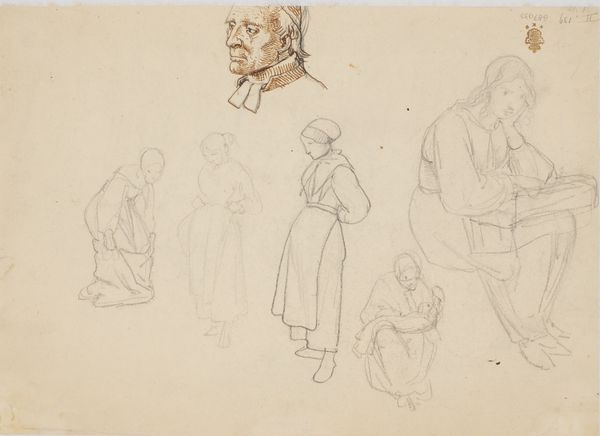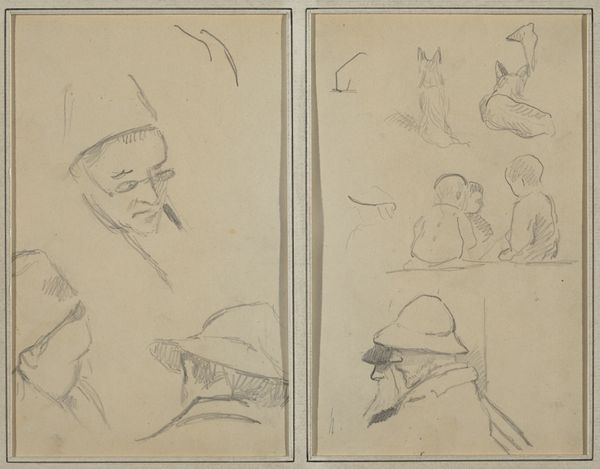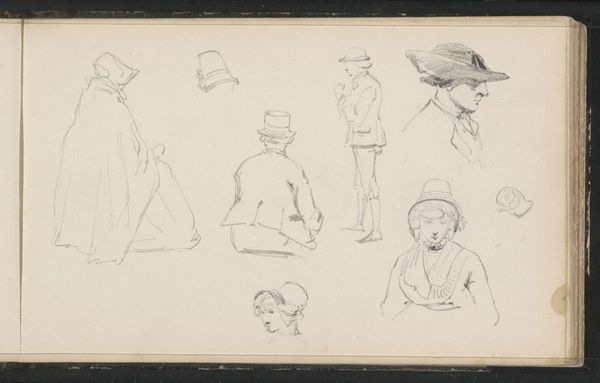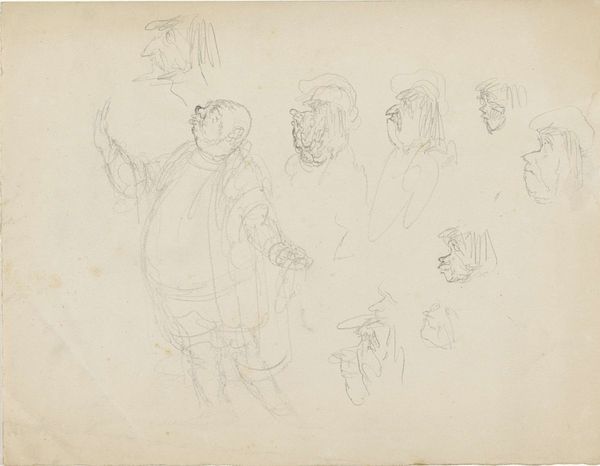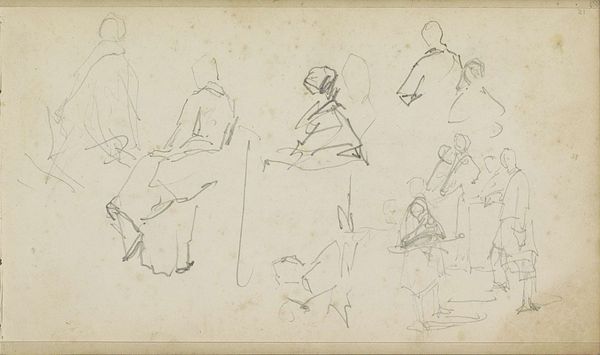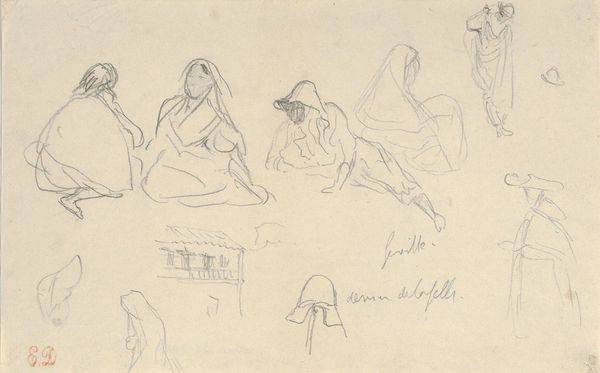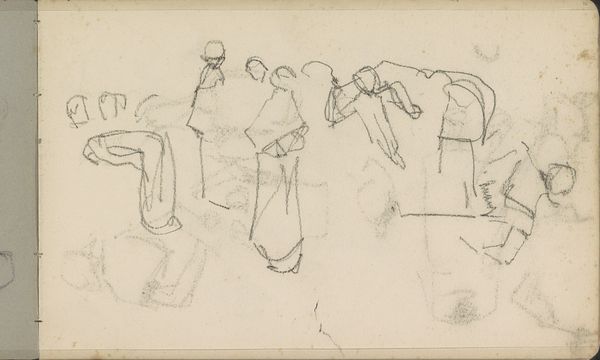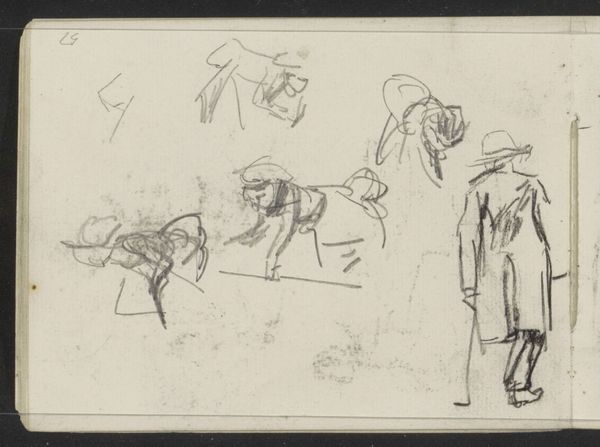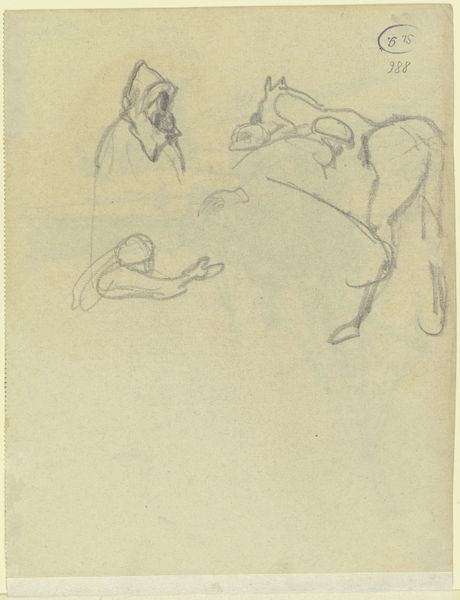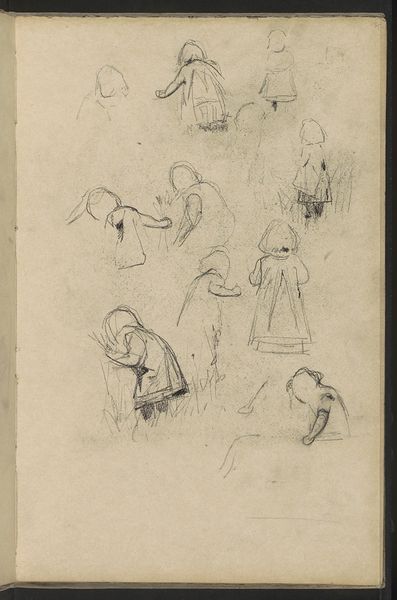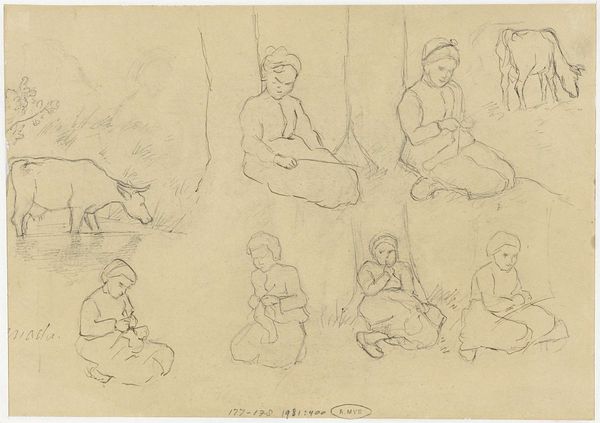
drawing
#
portrait
#
drawing
#
figuration
#
romanticism
#
orientalism
Copyright: Public Domain: Artvee
Curator: At first glance, it seems to be quickly rendered and preliminary, doesn't it? A jumble of sketches… Almost like the artist was trying to capture a fleeting moment or impression, focused on form rather than fine detail. Editor: Indeed. What we have here is Eugène Delacroix's "Four figure studies of Bedouins and three of head studies," a drawing brimming with Orientalist themes and Romantic fervor. Curator: The paper looks like it could be standard drawing paper, perhaps with some visible tooth? The graphite itself seems applied with varying pressure, some areas very light, others with slightly darker lines. It’s clearly about mark-making and speed. I'm interested in Delacroix's process here. Was this part of a larger body of work, perhaps related to the commissions he took? Editor: It speaks to the exoticized and romanticized perceptions that Europeans held regarding North Africa at the time, influenced by travel accounts and burgeoning colonial interests. Delacroix’s journey to Morocco deeply informed his palette and subject matter. These images served to reinforce a vision of the Orient as mysterious and sensual, both alluring and inherently “other.” Curator: I wonder what these materials signify within the broader colonial context of 19th-century France. Paper and graphite, seemingly simple, are still commodities, tied to specific modes of production and distribution... How might we interpret these choices of materials as integral to his exotic visions? Editor: Consider how this artwork exists within a public dialogue. Drawings such as this circulated through studios, printmaking, and eventually museums, which created an evolving public fascination with other cultures. His process contributes to a tradition where such themes become commodified, exhibited, and interpreted. The legacy persists in popular culture to this day. Curator: Thinking about it now, even these figures feel a little staged. There's something deliberately arranged about them, not entirely naturalistic. Editor: Absolutely, there is always an interpretive framework guiding Delacroix’s hand, influencing how he selected to capture his observations in relation to a growing art market. I appreciate you grounding the piece in the material reality. Curator: Ultimately, by emphasizing how this drawing was composed using simple materials, we have a new consideration of labor, artistic representation, and global influences in 19th century artwork. Editor: Right. Examining Delacroix through this lens reveals more than just individual genius. We get insight into a world shaped by complex political forces.
Comments
No comments
Be the first to comment and join the conversation on the ultimate creative platform.
